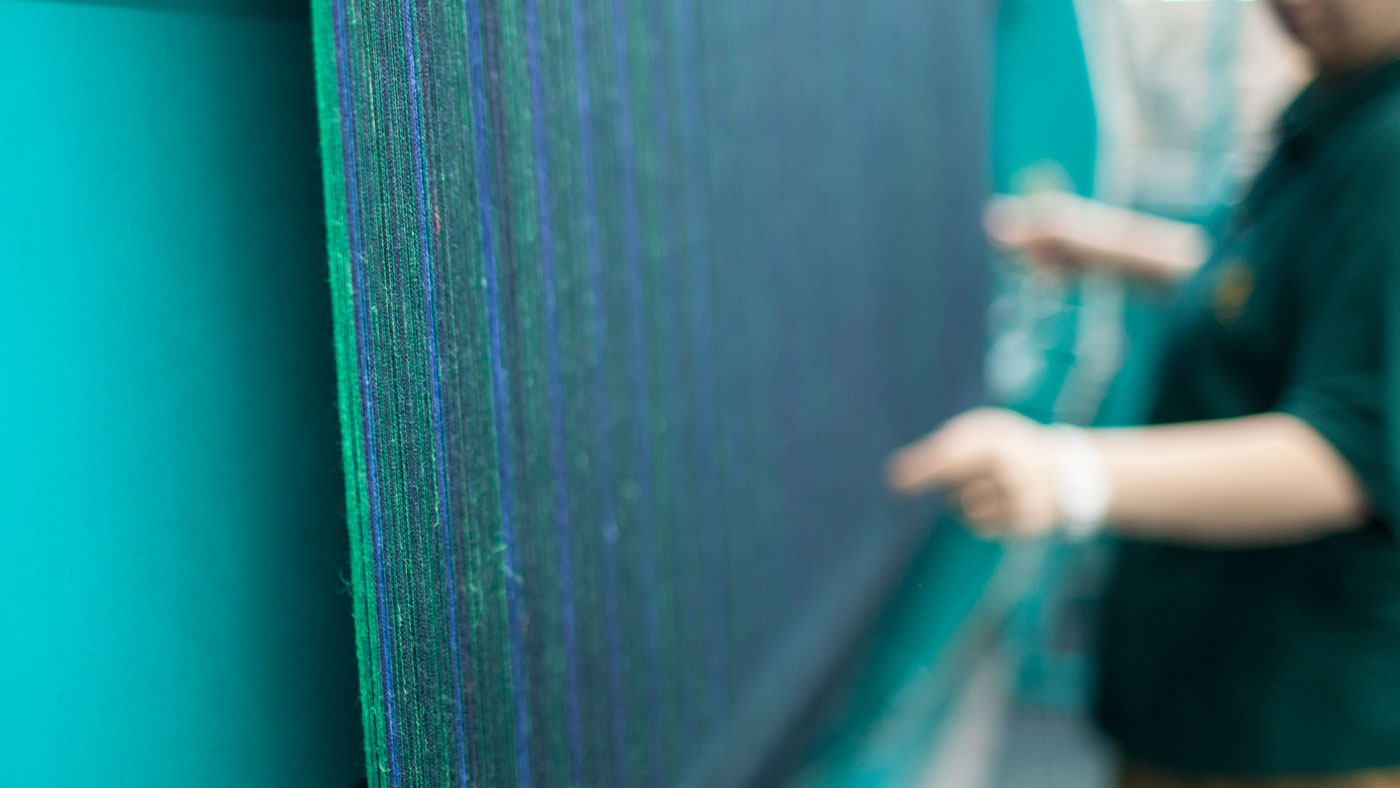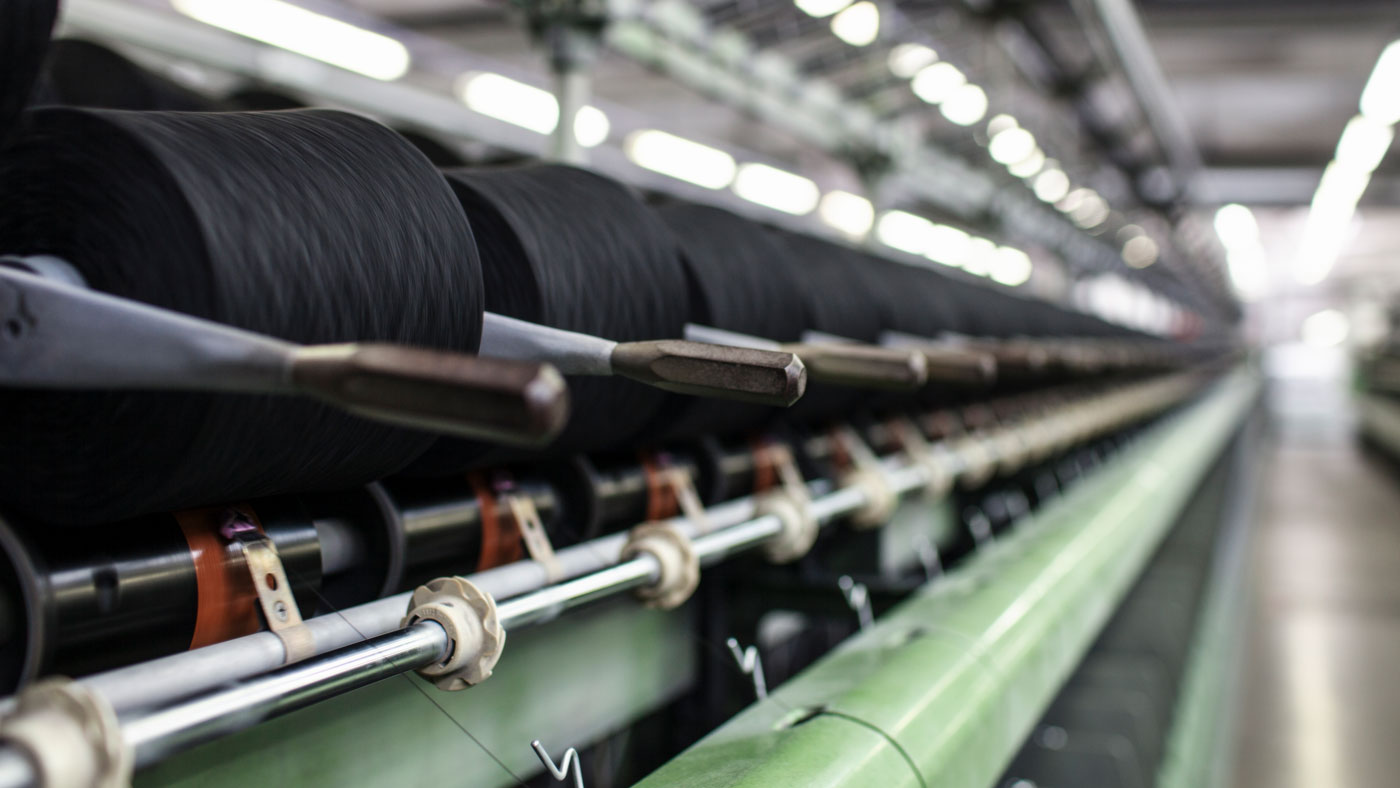Loro Piana: A rare kind of luxury
With fleeces harvested from venerated creatures Loro Piana spins yarns of the most exquisite kind

Luxury goods company Loro Piana has its roots in Piedmont, the largest region in northern Italy. This is an area of rugged beauty: flanked by the Alps and bordering France and Switzerland, its rolling hills lead to secluded valleys, deep forests and verdant plains. Pietro Loro Piana established the family company in 1924 in Quarona, a small bucolic town a mere 90-minute drive from the bustling streets of Milan. Humble beginnings for a company that is today considered the world's largest manufacturer of cashmere, and its most important purchaser of fine wool.

The Loro Piana family started out as wool merchants at the beginning of the 19th century, but it was Pietro's engineering background and entrepreneurialism at a time of industrial change that laid the foundations for the greatness that was to come. When his nephew Franco took over in 1941, the younger Loro Piana introduced the company's precious cloths to a rapidly expanding international market; soon high-end designers and manufacturers in Paris, America and even Japan were using its 'Made in Italy' materials. As such, Loro Piana has supplied the yarn and fabrics for some of fashion's era-defining collections, from Yves Saint Laurent's chic knits to Giorgio Armani's 1980s power suits. Franco's sons, Pier Luigi and Sergio, took over the company in the 1970s and pushed this legacy further into luxury retail via the brand's own finished products.
"In Italy, we can see different habits, cuisines, wines and ways of living. Fashion is becoming a world without south, north, east or west," says Pier Luigi, who is now deputy chairman. In an unusual set-up, the two brothers alternated as company president, each holding the post for three years, before Sergio's death in 2013. The same year, luxury goods conglomerate LVMH purchased a majority share in Loro Piana for the not-so-princely sum of $2.6 billion.
The Week
Escape your echo chamber. Get the facts behind the news, plus analysis from multiple perspectives.

Sign up for The Week's Free Newsletters
From our morning news briefing to a weekly Good News Newsletter, get the best of The Week delivered directly to your inbox.
From our morning news briefing to a weekly Good News Newsletter, get the best of The Week delivered directly to your inbox.
While Loro Piana's foundations remain in northern Italy, where it runs more than 10 highly specialised manufacturing sites – including a quality-control laboratory in Roccapietra that is the largest of its kind – the company takes a decidedly global stance. It has 158 international stores, from Aspen to Capri, and takes pains to safeguard rare textile traditions and the finest raw materials from around the world.
"The real value of the product creates brand awareness," explains Pier Luigi in typically expressive Italian style. The deputy chairman is charismatic to the core, with swept-back grey hair, a neat moustache and a tailored wardrobe, all of which lend him an air of old-time nobility. Investment pieces, or 'ultra luxury', have indeed become by words for the Loro Piana label. A visit to its flagship store on Milan's elegant Via Montenapoleone feels like an education in prestige fabrics – and the provenance of each sounds like the stuff of folklore. There are sweaters spun from baby cashmere, obtained by hand from the under-fleece of Mongolian Hircus goat kids; one such sweater requires the gentle combing of 19 kids. Others are made from the undyed wool of the Pecora Nera, a sheep whose fleece was only returned to its original black colour after 20 years of selective breeding in New Zealand. Even more impressive is Loro Piana's Gift of Kings, a super- light wool measuring a gossamer 12 microns in diameter; a scarf will cost you just over £2,000.

Made-to-measure suits are tailored from Tasmanian, a light wool fabric named after the island south of Australia that provides the perfect habitat for rare-breed merino sheep. Created in the 1960s, the worsted material was inspired by the label's Priest Cloth, produced especially for ecclesiastical robes. Wearing a Tasmanian suit, therefore, gives you good reason to feel blessed.
At Loro Piana, pride of place is given to a superior and extremely rare material made from the fine-haired, golden under-fleece of the vicuna. Known as the 'Queen of the Andes', this slender animal – a relative of the llama, also indigenous to South America – was believed by the Incas to be sacred, with magical powers granted by the gods. In ancient times, the golden fleece of the vicuna was reserved for Inca emperors, but by the 16th century the animal was extensively hunted by the Spanish conquistadors. By the 1960s, aggressive poaching meant that vicuña numbers had dwindled to a dangerous lowa
A free daily email with the biggest news stories of the day – and the best features from TheWeek.com
Seeking to protect the creature, Loro Piana first engaged with the Peruvian authorities in the '80s, and in 1994 the company was given exclusive permission to reintroduce vicuña products. The Reserva Dr Franco Loro Piana was opened in 2008, giving the precious beasts 2,000 hectares of land to roam freely. Five years later, the Italian brand obtained the rights to protect and responsibly shear vicunas grazing in north-east Argentina by securing a 60 per cent stake in Argentinian vicuña firm Sanin SA.
Such rarity has its price: the Loro Piana 'Lanford' belted vicuña coat leaves little change from £10,000. "For Loro Piana, luxury means quality with no compromise," states Pier Luigi. "You don't care about price as long as you care about the best in that class. This is luxury, because if somebody can select the best cashmere and the cost doesn't matter, that's a big privilege."
If you had any doubt about Loro Piana's commitment to excellence, look to its annual Record Bale award, which pits the best Australian and New Zealand woolgrowers against each other, with the aim of finding the world's most luxurious merino wool. It's usually minuscule differences – tenths of microns – that determine the prize-winning bales, from which Loro Piana creates limited collections of suiting fabrics.
Such is the company's reputation that it is often sought out to spearhead unusual projects supporting rare textile traditions. This was the case with the ancient practice of producing rare fibres from lotus flowers. Remarkably, yarns are produced by extracting tiny filaments from the stems of the sacred plant by hand. "An old friend of mine thought I might have the passion for this ancient product," says Pier Luigi. "I analysed the fabric in terms of yarns and fibre, and I found it so interesting. So I sent it to my tailor to make a blazer. It was so comfortable, so special, that I said I wanted to manufacture it: yarn, fabric, everything." And so the two friends left Italy to trace the fabric's origins back to Burma, where Pier Luigi found the small laboratory that now produces his yarn. "I have really fallen in love with the way they manufacture," he explains of the process. "It is the most green fabric in the world right now. It's all done by hand, including the movement of the machinery." The yarn is then spun into undyed, ecru-coloured cloth back in northern Italy.
The protection of this intricate process, which yields only 50 metres of prized lotus flower fabric per month, is indicative of Pier Luigi's approach to a changing textile industry. "At Loro Piana, the philosophy is never to use technology if the quality will be reduced," he explains. "Quality comes first; technology has to serve it, not vice versa." Loro Piana's unwavering focus on quality is a doctrine passed from father to son: "I think I really have been trained and taught by my father, who was always looking for very high- quality fabrics. He had this idea not to compromise quality for cheaper technology. He had a great long-term view, and he was right."
One of Pier Luigi's first tasks in the family firm was to compile inventories of the raw material before the dyeing process. No doubt this instilled in him an in-depth knowledge of both the fabric and the financial structure of this environment he prefers to call "home" rather than "work".

Today, Loro Piana's business operations are twofold. The textile division produces high- quality cloth and yarns for select high fashion labels as well as interior designers, while the luxury goods division focuses solely on Loro Piana's own lines, from outerwear to accessories. When Loro Piana opened its first standalone store in New York in 1994, sales of the label's finished products – including those made from its world-famous cashmere – strengthened its stronghold on the luxury goods market and offered additional opportunity for growth. Today, Pier Luigi sees this possibility in specialised sportswear.
However, in true Loro Piana style, the brand's activewear differs greatly from generic gym kit; patented technology turns delicate natural fibres into hard-wearing outerwear befitting the leisure pursuits of its jet-setting clientele. "Turning linen, cotton and natural fibres into active sportswear – for me, this was and still is the future," explains Pier Luigi. The Icer jacket, for alpine skiing, is available in a precious cashmere rendered waterproof by a water and wind-resistant double barrier and a hydrophilic membrane – drops of water magically slide off the garment.
An avid sailor and competitor in regattas, Pier Luigi uses his superyacht, My Song, as a testing ground for high-endurance textile innovations. "I am a sailor. I race with my boat and we use our boat like a laboratory. We try to experience the product as much as we can ourselves," he says knowingly, like a man who has seen his fair share of choppy, challenging seas.
A businessman of firm standing on Forbes' list of global billionaires, Pier Luigi Loro Piana remains as eagle-eyed as ever when it comes to manufacturing. "I want to know everything about my product. I want traceability. I want to know how it is made, who is making it, where, and what is the raw material," he explains, adding, "For me, it has always been difficult to engineer something that I don't like."
So, considering his surely sizeable wardrobe, which item does he rely on most? Surprisingly, Pier Luigi cites his old horse-riding jacket, which he often pairs with a signature cashmere sweater. "It's the onion way to be dressed!" he exclaims, charmingly unaware that his metaphor might get lost in translation. He is, of course, referring to the art of layering, but, knowing Pier Luigi, it may not be long before a new luxury textile is developed from something as unlikely as the cipolla, only one with regal origins, cultivated in the great palaces of Indian maharajahs, perhaps. In Loro Piana's world, fairytale fabrics are spun from such tales of wonder.
-
 Pakistan: Trump’s ‘favourite field marshal’ takes charge
Pakistan: Trump’s ‘favourite field marshal’ takes chargeIn the Spotlight Asim Munir’s control over all three branches of Pakistan’s military gives him ‘sweeping powers’ – and almost unlimited freedom to use them
-
 Codeword: December 6, 2025
Codeword: December 6, 2025The daily codeword puzzle from The Week
-
 Crossword: December 6, 2025
Crossword: December 6, 2025The daily crossword from The Week